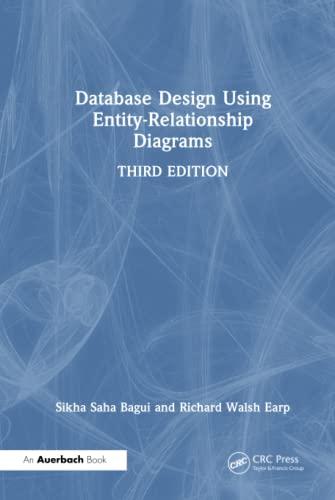Answered step by step
Verified Expert Solution
Question
1 Approved Answer
5 . 9 LAB: Grocery list editor with undo stack In this lab a grocery list editor with undo functionality is implemented. Step 1 :
LAB: Grocery list editor with undo stack
In this lab a grocery list editor with undo functionality is implemented.
Step : Inspect the UndoCommand abstract base class
The readonly UndoCommand.h file has a declaration for the UndoCommand abstract base class. Access UndoCommand.h by clicking on the orange arrow next to main.cpp at the top of the coding window. The UndoCommand class represents a command object: an object that stores all needed information to execute an action at a later point in time. For this lab, a command object stores information to undo a grocery list change made by the user.
Step : Inspect the incomplete GroceryList class
The GroceryList class is declared in GroceryList.h Two member variables are declared:
A vector of strings for list items
A stack of UndoCommand pointers for undo commands
Note that the AddWithUndo member function is already implemented. The function adds a new item to the list and pushes a new RemoveLastCommand object onto the undo stack.
Step : Implement RemoveLastCommand's Execute member function
The RemoveLastCommand class inherits from UndoCommand and is declared in RemoveLastCommand.h When a RemoveLastCommand object is executed, the string vector's last element is removed. So when the user appends a new item to the grocery list, a RemoveLastCommand is pushed onto the stack of undo commands. Popping and executing the RemoveLastCommand then removes the item most recently added by the user.
RemoveLastCommand's sourceVector member variable and constructor are already declared:
sourceVector is a pointer to a GroceryList object's vector of strings.
The constructor takes a pointer to a vector of strings as a parameter, and assigns sourceVector with the pointer.
Implement RemoveLastCommand's Execute member function to remove sourceVector's last element.
Step : Implement GroceryList's ExecuteUndo member function
Implement GroceryList's ExecuteUndo member function to do the following:
Pop an UndoCommand off the undo stack
Execute the popped undo command
Delete the undo command
File main.cpp has code that reads in a list of commands, one per line, that allow for basic testing of basic operations. So after implementing ExecuteUndo run your program with the following input:
add bananas
add grapes
add strawberries
print
undo
print
undo
print
quit
Verify that the corresponding output is:
bananas
grapes
strawberries
bananas
grapes
bananas
The program's output does not affect grading, so additional test cases can be added, if desired.
Submitting code written so far to obtain partial credit is recommended before proceeding to the next step.
Step : Implement the SwapCommand class and GroceryList's SwapWithUndo member function
Implement the SwapCommand class in SwapCommand.h The class itself is declared, but no members yet exist. Add necessary member variables and member functions so that the command can undo swapping two items in the grocery list.
Implement GroceryList's SwapWithUndo member function. The function swaps list items at the specified indices, then pushes a SwapCommand, to undo that swap, onto the undo stack.
Step : Implement the InsertAtCommand class and GroceryList's RemoveAtWithUndo member function
Implement the InsertAtCommand class in InsertAtCommand.h Add necessary member variables and member functions so that the command can undo removing a grocery list item at an arbitrary index.
Implement GroceryList's RemoveAtWithUndo member function. The function removes the list item at the specified index, then pushes an InsertAtCommand, to undo that removal, onto the undo stack.
Step by Step Solution
There are 3 Steps involved in it
Step: 1

Get Instant Access to Expert-Tailored Solutions
See step-by-step solutions with expert insights and AI powered tools for academic success
Step: 2

Step: 3

Ace Your Homework with AI
Get the answers you need in no time with our AI-driven, step-by-step assistance
Get Started


